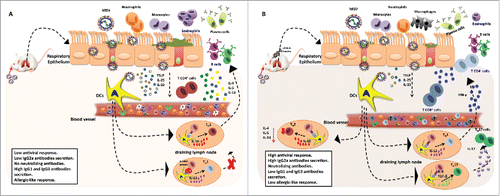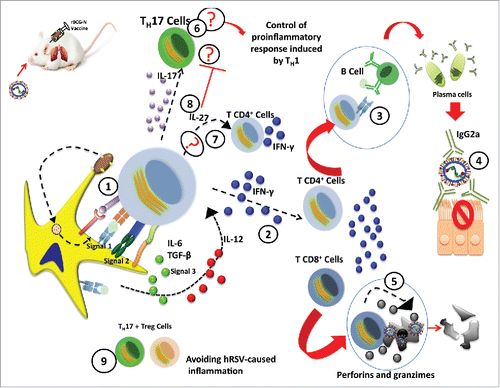Figures & data
Figure 1. Immune response induced by hRSV in absence or presence of the recombinant rBCG-N-hRSV vaccine. hRSV induce an aberrant immune response due to the erratic T cell polarization, producing a high pro-inflammatory and allergic-like response (A). On the other hand, the rBCG-N-hRSV induces an effective immune response that could control the infection through the polarization of CD4+ and CD8+ T cells and neutralizing antibodies decreasing the recruitment of immune cells such as neutrophils, eosinophils and the mucus secretion (B).

Figure 2. Proposed mechanism of the rBCG-N-hRSV vaccine that controls the hRSV-infection. Subsequent to the rBCG-N-hRSV infection and the viral infection, the events goes as follows. (1) Immunological synapsis between the APC (Dendritic cells) and T cells. (2) TH-1 response polarization and secretion of IFN-γ by CD4+ and CD8+ T cells. (3) Activation of B cells by the T cells. (4) Antibodies secretion by plasma cells with the proper neutralizing isotype. (5) Cytotoxic activity of the CD8+ T cell and depletion of infected-cells. (6) A TH-17 profile induction suggests a possible way of control for the exacerbated TH-1 response. (7) Possible IL-27 secretion and proliferation of CD4+ T cells and induction of IFN-γ secretion. (8) IL-27 secretion could inhibit the TH-17 response. (9) Relation between the TH-17+ Treg that might decrease the hRSV-pathology.

